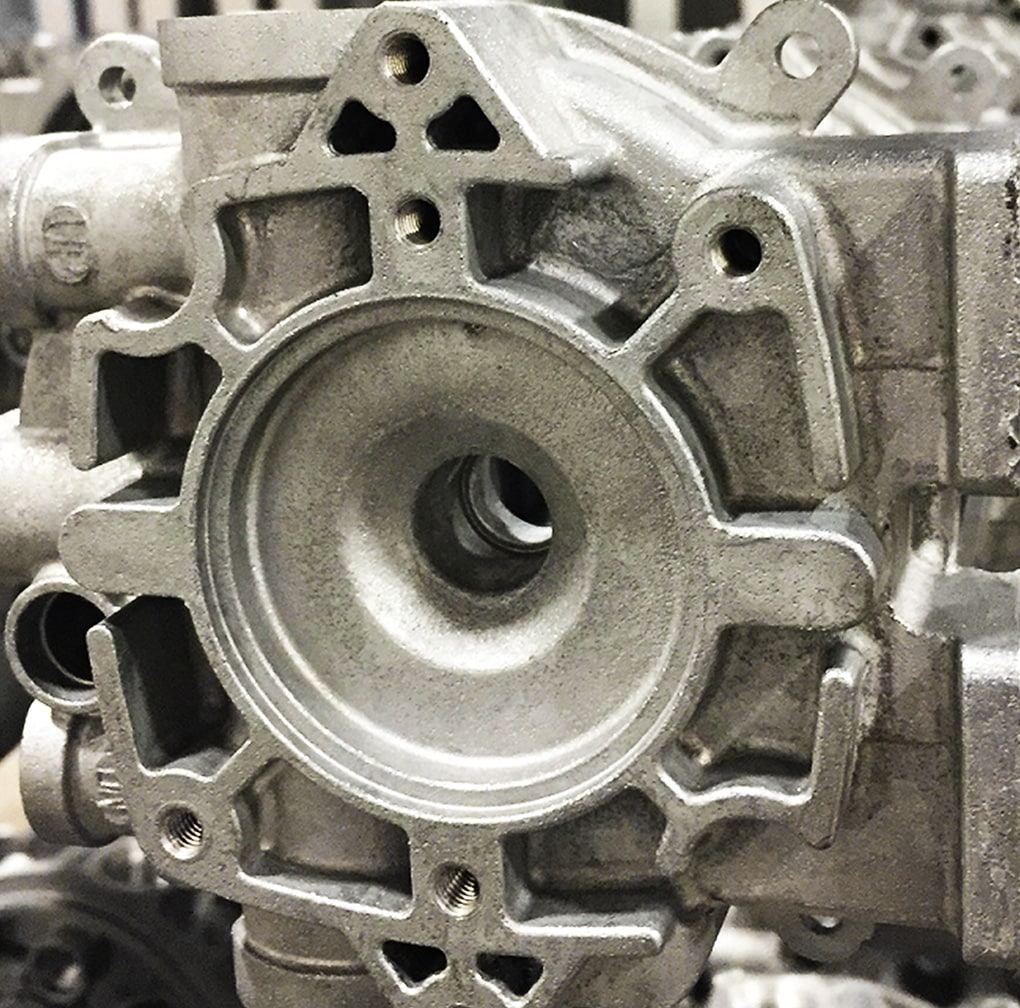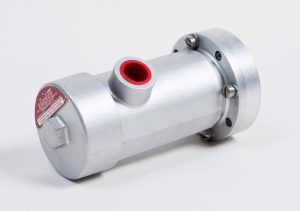Exploring the Versatile Uses and Applications of Light Weight Aluminum Castings in Modern Industries
Light weight aluminum castings have ended up being integral to numerous modern sectors due to their distinct residential properties. They offer considerable advantages in weight reduction, thermal conductivity, and deterioration resistance. From vehicle technologies to applications in consumer products and building and construction, their adaptability is exceptional. The real extent of their effect expands beyond immediate benefits, hinting at more comprehensive implications for sustainability and effectiveness. What exists ahead for light weight aluminum castings in an ever-evolving industrial landscape?
Automotive Sector Innovations
The automobile market has actually progressively welcomed aluminum castings to enhance automobile efficiency and efficiency. By utilizing light weight aluminum, suppliers can produce lighter elements, which add to improved gas economy and decreased exhausts. Key applications include engine blocks, transmission instances, and structural components, where the product's strength-to-weight ratio provides durability without adding excess weight.
Aluminum spreadings additionally use remarkable thermal conductivity, which aids in much better warm dissipation, consequently improving engine performance. Developments in casting innovations, such as die spreading and sand spreading, make it possible for the production of intricate geometries, permitting for cutting-edge designs that enhance room and functionality.
The recyclability of light weight aluminum lines up with sustainability objectives in the automobile industry, promoting eco-friendly techniques. As the sector remains to introduce, using light weight aluminum spreadings is likely to broaden, driving more developments in automobile layout and effectiveness.
Aerospace Applications and Innovations
While the aerospace sector remains to focus on weight reduction and gas efficiency, aluminum castings have emerged as an important product choice for numerous applications. Their light-weight nature, combined with high strength-to-weight proportions, permits significant renovations in aircraft efficiency and efficiency. Aluminum castings are frequently made use of in architectural components, such as fuselage frames and wing parts, where lowering weight is essential.
Recent advancements in aluminum spreading modern technologies, including boosted alloy solutions and accuracy casting techniques, have actually further improved the material's efficiency abilities. These advancements enable the manufacturing of complicated geometries and detailed designs while preserving structural integrity. Furthermore, light weight aluminum's superb rust resistance warranties longevity and dependability in rough aerospace environments.
As the aerospace field significantly accepts sustainability, aluminum castings supply a recyclable remedy that aligns with environmentally friendly practices, making them a crucial element in the growth of next-generation aircraft.
Customer Goods and Everyday Products
As consumers increasingly look for light-weight yet long lasting materials for day-to-day products, light weight aluminum spreadings have obtained appeal in different consumer products. The distinct properties of aluminum, including its resistance to deterioration and excellent thermal conductivity, make it an optimal selection for items like kitchenware, household devices, and exterior gear. Light weight aluminum cast frying pans and pots give even warmth distribution, enhancing cooking effectiveness. In addition, the usage of aluminum in products such as bike structures and baggage guarantees an equilibrium in between toughness and transportability. Producers appreciate light weight aluminum castings for their convenience, as they can be conveniently formed right into intricate shapes while keeping architectural honesty. Moreover, the capacity to reuse aluminum without weakening its homes straightens with growing customer choices for lasting products. In general, light weight aluminum spreadings are indispensable to the production of resilient, practical, and visually pleasing consumer goods, fulfilling the demands of modern-day lifestyles.
Building and Architectural Uses
Light weight aluminum castings have come to be a crucial part in building and construction and architectural design, particularly as a result of their strength and lightweight nature. These homes make aluminum an optimal selection for numerous applications, consisting of architectural aspects, exteriors, and attractive attributes - Wisconsin Aluminum Foundry. Builders and architects progressively use light weight aluminum spreadings for home window frameworks, doors, and roofing systems, improving both capability and appearances. The material's resistance to rust additionally extends its life-span, lowering maintenance prices and making certain durability in diverse ecological problems
Aluminum can be quickly formed into intricate layouts, allowing for ingenious architectural expressions. Its versatility promotes the production of custom-made pieces that fulfill specific design demands, from elaborate railings to complex supports. As sustainability ends up being a concern, light weight aluminum's recyclability contributes to its allure in green building techniques. Generally, aluminum castings are revolutionizing the building sector by offering lightweight, durable, and aesthetically enticing remedies.
Electric and Digital Elements
Light weight aluminum spreadings play an essential function in the manufacturing of lightweight electric units, which enhance portability and effectiveness in various applications. Furthermore, their superb thermal conductivity makes them suitable for heat sinks, making certain peak performance and durability of digital components. Light weight aluminum's conductive homes add to its usage in numerous electrical conductors, stressing its importance in contemporary technology.
Light-weight Electric Rooms
Light-weight electric enclosures play an important duty in securing sensitive electronic elements from environmental variables and physical damages. Built from light weight aluminum castings, these rooms are valued for their strength-to-weight proportion, making them excellent for various applications throughout sectors. Their light-weight nature aids in minimizing overall system weight, which is crucial in portable and mobile electronic devices. Light weight aluminum's rust resistance boosts longevity, expanding the lifespan of the encased components. The capacity to mold and mildew light weight aluminum right into complex forms enables customized layouts, satisfying details needs while guaranteeing reliable warm dissipation. In addition, these rooms can be quickly integrated right into existing systems, providing flexibility and versatility in modern-day technological settings. Overall, light-weight light weight aluminum enclosures significantly contribute to the performance of electronic gadgets.
Warmth Sinks and Conductors
While several products are used in digital parts, light weight aluminum castings stand out for their performance in warmth monitoring as warmth sinks and conductors. Their outstanding thermal conductivity permits reliable warm dissipation, this post which is important in avoiding the overheating of electronic devices. Aluminum's light-weight nature additionally improves its suitability for applications where weight is a considerable factor, such as in aerospace and automotive industries. Furthermore, aluminum castings can be easily molded into intricate forms, offering layout flexibility for maximizing thermal efficiency. The corrosion resistance of aluminum also adds to the long life and dependability of these parts in different environments. As innovation developments and gadgets end up being extra portable, the demand for efficient warmth management options, like aluminum castings, remains to grow.
Marine Industry Usage
The aquatic industry progressively relies on aluminum castings for their remarkable toughness and rust resistance. These properties make light weight aluminum an excellent option for numerous applications, consisting of boat hulls, engine parts, and aquatic equipment. The lightweight nature of light weight aluminum castings makes it possible for enhanced gas effectiveness and simpler ability to move in watercraft, which is crucial for both industrial and leisure vessels.

Light weight aluminum spreadings also offer considerable price advantages due to their lengthy life-span and low maintenance needs, reducing the overall operational costs for marine drivers. Additionally, the convenience of light weight aluminum enables for elaborate layouts that can satisfy particular performance requirements.
Producers in the aquatic market make use of advanced spreading techniques to generate complex forms, making certain that components fulfill extensive security and performance standards. As the demand for high-performance marine vessels grows, aluminum spreadings are placed as a vital material in boosting the functionality and durability of aquatic devices.
Sustainability and Recycling in Light Weight Aluminum Spreading

Light Weight Aluminum Recycling Refine
Reusing aluminum plays an important role in minimizing ecological influence and saving resources within the casting industry. The aluminum reusing procedure begins with the collection of scrap aluminum, which can include old parts, manufacturing waste, and post-consumer products. This scrap is after that sorted, cleaned up, and shredded right into small items to promote melting.
Once prepared, the light weight aluminum scrap is thawed in a furnace at lower temperatures than main aluminum production, considerably decreasing energy intake. The molten aluminum is after that cast right into ingots or various other shapes for reuse in various applications - Aluminum Foundry. This closed-loop system allows for the reliable healing of aluminum, protecting its buildings while lowering the demand for virgin products. As a result, the recycling procedure is a vital component of lasting methods in light weight aluminum casting
Environmental Advantages
While aluminum casting plays an important function in different sectors, its ecological benefits are specifically exceptional pertaining to sustainability and resource preservation. The light-weight nature of light weight aluminum adds to energy effectiveness in transportation, minimizing fuel consumption and emissions. In addition, light weight aluminum casting helps with using recycled materials, substantially decreasing the energy required for production compared to key aluminum. This reusing procedure minimizes waste and decreases the environmental effect related to mining and refining raw materials. Moreover, aluminum is 100% recyclable without degradation of its residential properties, promoting a sustainable lifecycle. By picking light weight aluminum spreading, industries can substantially lower their carbon footprint while promoting resource efficiency, making it a vital option in the pursuit of ecologically friendly manufacturing methods.
Closed-Loop Equipments

Often Asked Inquiries
What Are the Trick Advantages of Aluminum Castings Over Other Materials?
Light weight aluminum castings use light-weight residential properties, outstanding rust resistance, and high strength-to-weight ratios. They can be quickly molded into complex forms, give excellent thermal and electric conductivity, and are cost-efficient, making them more suitable over several alternate products.
Just how Is the Light Weight Aluminum Casting Refine Eco-friendly?
The light weight aluminum spreading procedure is ecologically pleasant due to its recyclability, low power consumption, and decreased waste production. Its ability to use recycled products reduces the carbon impact, advertising sustainability within producing methods.
What Prevail Obstacles in Aluminum Spreading Production?
Common difficulties in aluminum spreading production consist of preserving dimensional precision, taking care of thermal contraction, protecting against problems like porosity and incorporations, making certain correct mold and mildew layout, and maximizing production efficiency while decreasing material waste and ecological impact.
Just How Do Light Weight Aluminum Castings Contrast in Price With Other Production Techniques?
Light weight aluminum spreadings normally use competitive expenses compared to other making techniques, especially for tool to high-volume manufacturing. Their lower initial tooling expenditures and reliable product usage can lead to positive business economics with time.
What Future Trends Are Anticipated in Aluminum Spreading Innovation?
Future trends in light weight aluminum casting technology are prepared for to include innovations in automation, boosted alloy structures, enhanced reusing approaches, and the assimilation of 3D printing, all aimed at increasing performance, reducing expenses, and decreasing environmental effect.
Recent innovations in aluminum spreading technologies, including improved alloy formulations and accuracy spreading strategies, have content further improved the product's performance capabilities. Aluminum spreadings have ended up being an essential part in building and architectural layout, specifically due to their toughness and light-weight nature. The light weight aluminum recycling process starts with the collection of scrap aluminum, which can include old elements, producing waste, and post-consumer products. As soon as prepared, the aluminum scrap is thawed in a furnace at reduced temperature levels than primary aluminum production, significantly reducing energy usage. In addition, aluminum spreading assists in the usage of recycled materials, greatly decreasing the power needed for production compared to main aluminum.